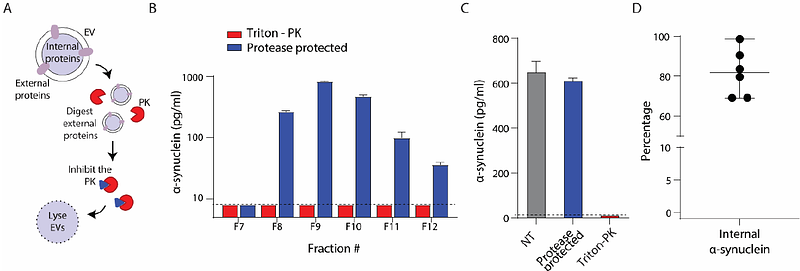Assessment of extracellular vesicle protein cargo as neurodegenerative disease biomarkers

Assessment of extracellular vesicle protein cargo as neurodegenerative disease biomarkers
Gilboa, T.; Ter-Ovanesyan, D.; Wang, S.-C.; Whiteman, S.; Kannarkat, G. T.; Church, G. M.; Chen-Plotkin, A. S.; Walt, D. R.
AbstractExtracellular vesicles (EVs) are released by all cells and hold great promise as a class of biomarkers. As EVs represent a way of capturing molecular information about the proteins inside of cells, EVs from biofluids could be used to better understand and diagnose disease from difficult to access organs such as the brain. This promise has led to increased interest in measuring EV proteins from both total EVs as well as brain-derived EVs isolated from the blood. However, the measurement of cargo proteins in EVs has been challenging because EVs are present at low levels and EV isolation methods are imperfect at separating EVs from free proteins. Thus, it is difficult to know whether a protein measured after EV isolation is truly inside EVs. In this study, we developed methods to measure whether a protein is inside EVs and quantify the ratio of a protein in EVs relative to total plasma. To achieve this, we combined a high-yield size exclusion chromatography (SEC) protocol with an optimized protease protection assay and Single Molecule Array (Simoa) digital ELISA assays for ultrasensitive measurement of proteins inside EVs. We applied these methods to analyze key proteins involved in neurodegenerative diseases: -synuclein, Tau, A{beta}40, and A{beta}42. We found that -synuclein and Tau are present in plasma EVs at a small fraction of the levels in total plasma, whereas A{beta}40 and A{beta}42 are undetectable in plasma EVs. This work provides a framework for determining the levels of proteins in EVs and represents an important step in the development of EV diagnostics for diseases of the brain, as well as other organs.